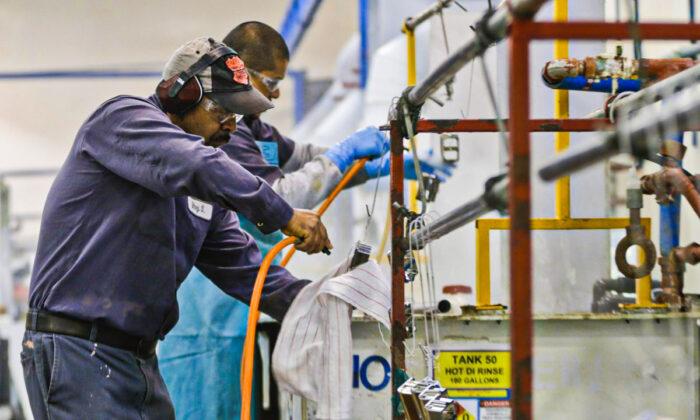The impending reopening of California’s theme parks is welcome news for thrill-seekers and Disney fans, but their hysteria pales compared to the delight of local economic leaders.
Gates to popular attractions such as Disneyland and Knott’s Berry Farm can swing open as early as April 1 under California’s guidance.
This is huge news for the local economy.
A Costly Decline
Of course, the past year was hardly a typical one.Hotel occupancy rates in Orange County fell from about 85 percent just before the pandemic last February to less than 20 percent last April, the month after the shutdowns began, according to global hospitality data and analytics company STR.
From last November through early March, hotel occupancy rates have generally ranged from 35 percent to 40 percent, still less than half of pre-pandemic levels, data show.
Average weekly room rates in Orange County were in the range of $153 to $177 per night in the month before the pandemic, and quickly fell to less than $90 per night in April, a more than 40 percent decline, according to the data company.
Going Forward
Looking at hospitality analytics firm STR’s data from Orange County, Florida—the home of all the Orlando-area theme parks—Californians can glean some projections about how quickly they might get back to that $9 billion economic impact from visitors to Orange Country, California.Not surprisingly, Orange County, Florida, also was severely impacted by the travel restrictions and stay-at-home orders. Its hotel occupancy fell from weekly averages of 78 percent to 89 percent in February 2020 down to 12 percent last April.
It rebounded back up to about 25 percent before the Florida theme parks reopened last June and Disney World reopened last July 11. Since then, there were spikes in Orlando-area occupancy levels around Thanksgiving, Christmas, New Year, and Mardi Gras.
Otherwise, occupancy levels in Florida’s mid-state hotels were generally 30 percent to 40 percent, finally rising up to about 46 percent just in the past two reporting periods.
During this time, Florida officials generally allowed theme-park operators to develop safety plans which maintained social-distancing and other public health measures. Disney reports that its Florida parks are operating at about 35 percent capacity under those guidelines.
California’s Restrictions
California has implemented more restrictions than Florida.Whereas in Florida theme park operators were allowed to develop safety protocols based on public health guidelines, California is ordering its theme-park operators to follow protocols based on a tier system established by the state.
If current conditions still exist when they reopen, the theme park operators in Orange County, California, will be limited to 15 percent capacity, less than half the visitor density Florida theme parks are permitted.
Based on the economic analysis of this writer, hotel occupancy rates in California will likely only increase 5 to 10 percentage points when theme parks are finally allowed to get to the 35 percent operating level already seen in Florida.
The primary rationale for this somber prediction is that California will require all theme park visitors to reside in California.
This might be all right for the theme park operators and possibly also for restaurants near the theme parks, but likely not for the hotel industry.
According to Visit Anaheim, 55 percent of visitors to Orange County, California, typically come from Southern California, while another 8 percent travel from Northern California.
Given the state imposing an initial capacity limit of 15 percent on local theme park operators, there will likely be more demand than tickets available. However, as Orange County’s health situation improves, theme park operators will next be able to move capacity to 25 percent and then to 35 percent.
Only then will the economic impact from theme parks’ reopening in California likely approach what has been observed so far in Florida.
In all, it’s great news that the local theme parks will be reopening over the next six weeks or so.
However, many of those furloughed bars and restaurants and possibly most of the hotel workers will likely have to wait a little longer for this piece of great news to trickle down to their being able to get back to work.





